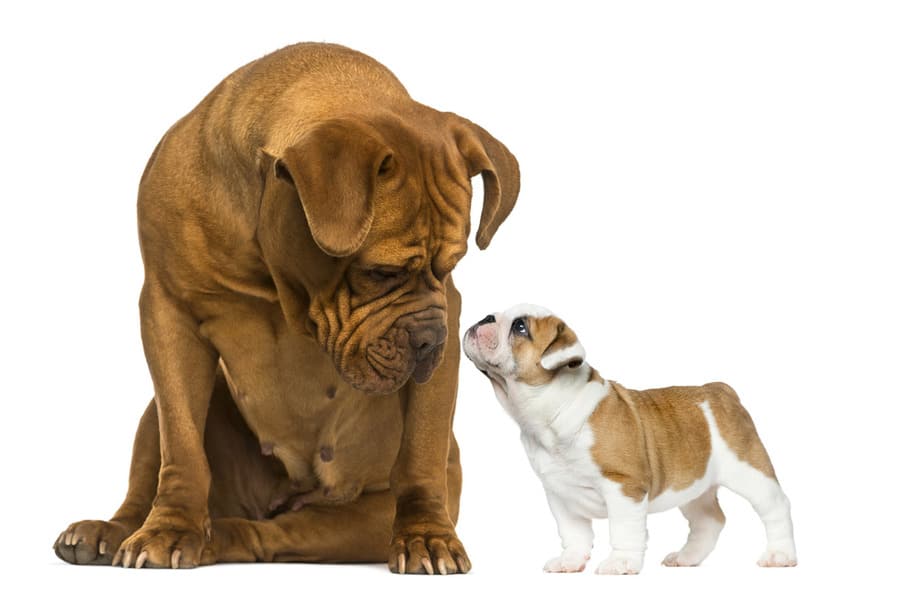Introducing a new dog or puppy into the home where there is already an established dog can be challenging. You might wonder if it’s fair to introduce a new puppy into their life? Will it stress an older dog out or make them depressed? Or has it already made your older dog depressed?
The good thing is a lot of pet owners have muddled through this challenge before, so you’re not alone! In this post, we’ll show you how to ensure a successful bonding between a new puppy and an older dog, and how to make sure neither are too stressed nor depressed by the process.
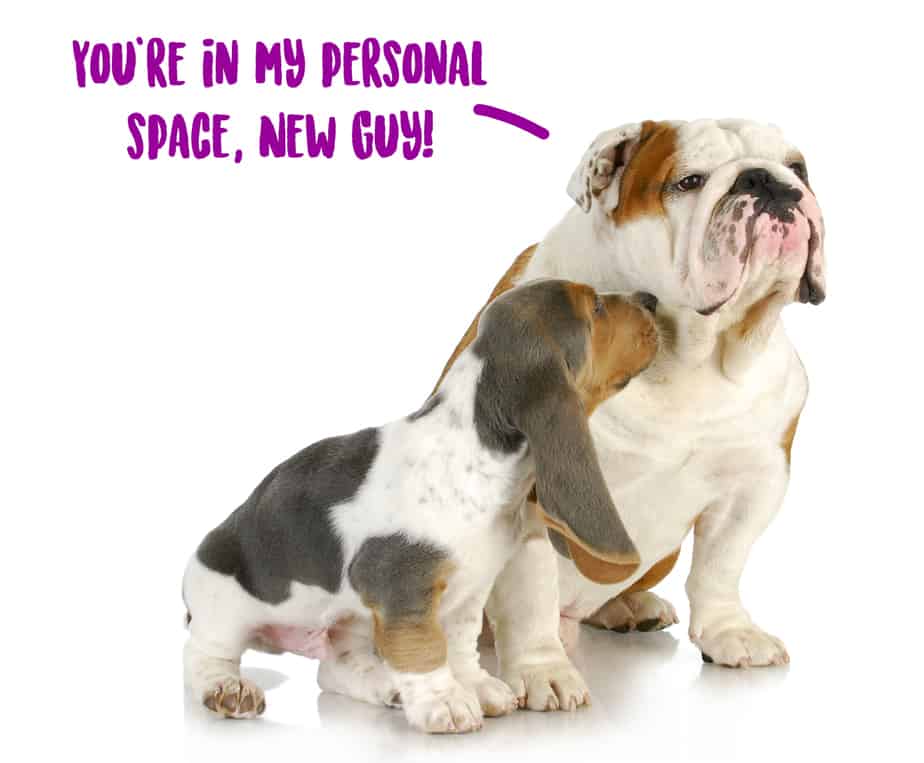
Does a new puppy cause stress to an older dog?
Some dogs adapt better than others to a new puppy. In order to have a smooth transition, it’s a good idea to have the older dog meet the puppy beforehand. While an older dog will likely adapt, there can be a period of stress during this time.
Make sure the new puppy starts learning manners and boundaries right away. If your older dog seems too stressed by the idea of adding a new dog, then a puppy might not be a good idea.
Of course, if the decision has already been made, then there are methods (further in this article) to ensure they get along and that your older dog doesn’t become too affected by the process.
You might also wish to read Was Getting a Second Dog a Mistake?
Veterinarian Comment
Care should be taken when introducing a young dog to your older dog to ensure safe boundaries. Keep in mind that your older dog may experience discomfort associated with arthritis. If your new puppy were to jump on your older companion, that may cause discomfort. Pain elicited from an excited puppy may result in defensive behavior like a snap or a bite. It may be worthwhile to have a physical examination done by a veterinarian prior to bringing home a new family member to identify any potential health concerns and to ensure potential discomfort is addressed appropriately.
Dr Marti Dudley
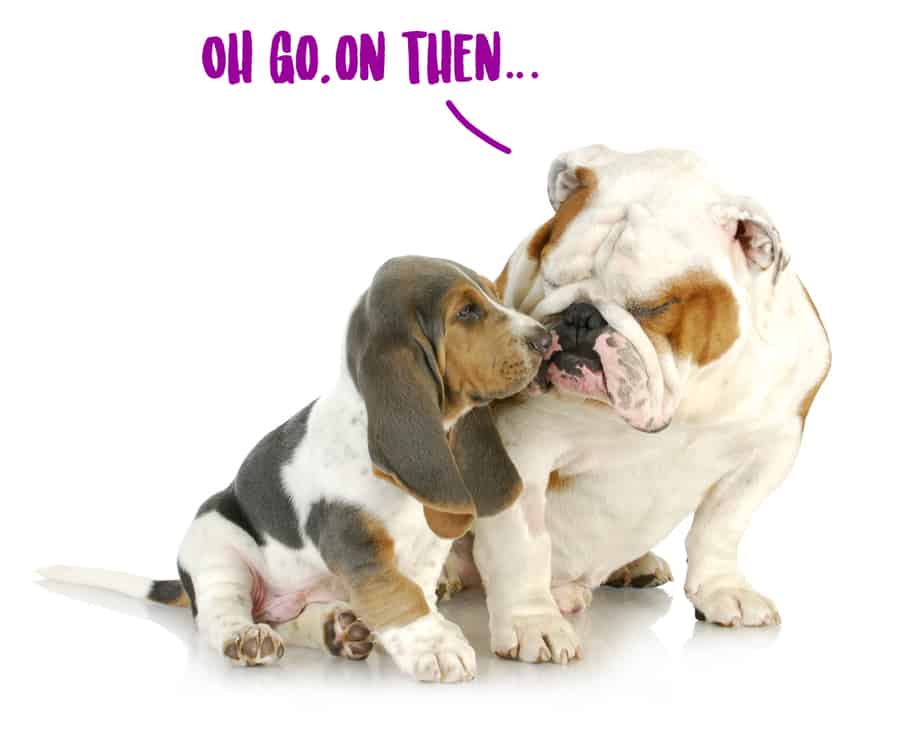
Does an older dog cause stress to a new puppy?
Young puppies are typically adaptable in new homes with established dogs. The impact of stress will be reduced if the breeder has socialized them prior to meeting. To ensure a positive transition, introduce the two dogs beforehand through either a playdate or using a blanket with their scent.
Make sure the puppy isn’t in any danger of being injured by your other dog. It’s not fair to introduce a puppy into a home where they may be put in danger by meeting a dog that could potentially be aggressive or intolerant of their arrival.
You should also make sure they have a safe space to escape if they feel stressed or just want to be alone.
A kennel or crate is ideal under these circumstances. Neither should be used as a punishment device, but rather as a “bedroom” they can move freely in and out of, or be confined when necessary.
A crate can be their sanctuary away from stress, so be sure to place this in a location that is their own space, rather than next to the dog bed, for instance.
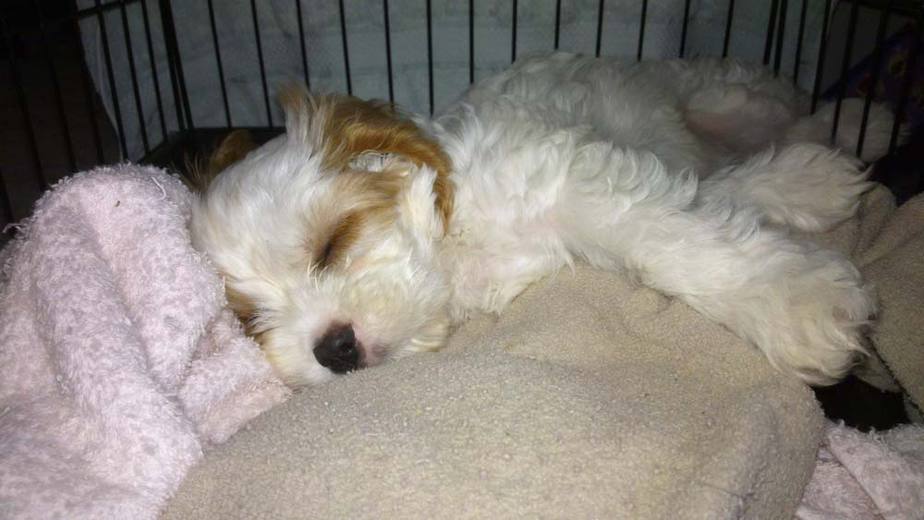
What to do about an older dog who is unhappy with the new puppy
I cannot stress this enough: if your older dog is unhappy or depressed about the new puppy in the household, getting rid of the older dog is NOT a good solution. Sadly, this is a common reason some older dogs end up in a shelter.
Be patient with the older dog throughout the process. Help both dogs learn how to coexist, through easing them into the transition, and offering lots of love and support.
They don’t have to love each other; they don’t even have to be friends. Make sure they have their own spaces and never force them to live in close quarters. Be sure they both have an adequate number of toys that are their own.
If they’re not getting along, or your older dog is stressed or depressed, then keep their sleeping areas separate, and their eating areas, too.
Be sure to read our post Second Dog Sleeping Arrangements.
Veterinarian Comment
Remember, although your puppy will require a lot of time and attention, you want to ensure that your older dog has special family interactions too!
Consider taking your older dog on fieldtrips to share quality time together or allow your older dog to have special alone time with the family. This will allow your senior dog to decompress and be the center of attention. This also helps to ensure that codependency doesn’t develop between dogs.
Dr Marti Dudley
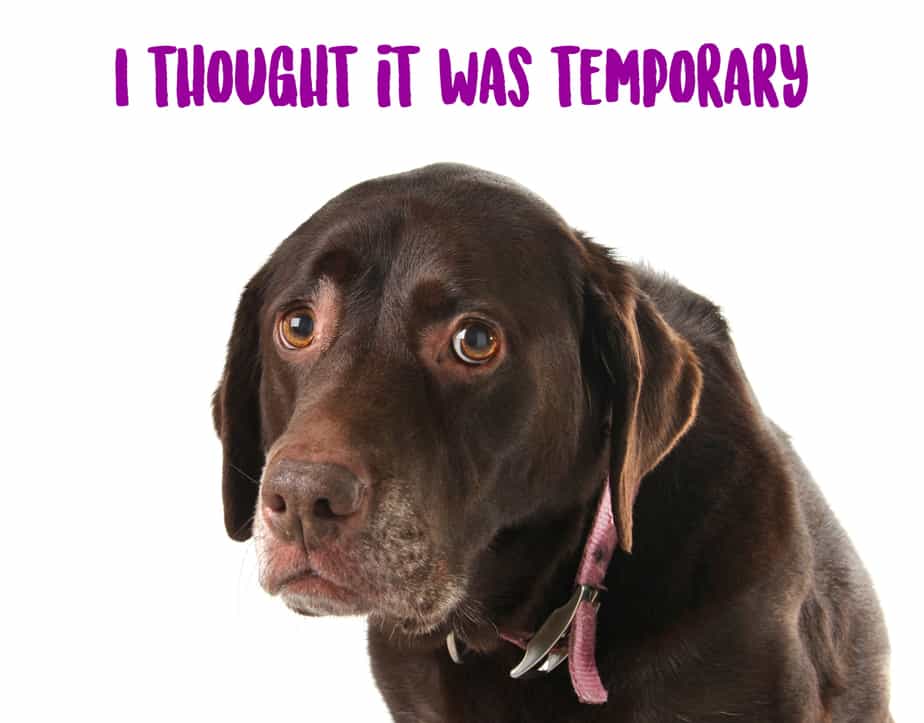
Pheromones can help
Make sure the puppy has a pheromone product on at all times (collars work great) or a squirt of spray is also good.
Then, anytime they walk into the room, your older dog will have exposure to those happy pheromones. This can eventually help them associate the new puppy with happy feelings.
Use positive reinforcement: remember, you shouldn’t force your dog to love the new puppy. Instead, help them learn that the new puppy can be a good thing. Shower them with verbal praise (happy voice!) and start giving treats at random, or during positive interaction with the new puppy.
It can take time
A puppy is hard work for an older dog. As the puppy ages, they will calm down (especially after the age of 2), which means less time bothering the older dog with wanting to play.
The puppy will also learn their boundaries. If they keep mouthing at the older dog, and the older dog doesn’t like it, a few barks and growls will teach the puppy not to do this.
The older dog will also adapt as time goes on. At first, they may show signs of being depressed, however, this can just be through the transition period, and may only last a few weeks to a few months.
If you find that your older dog isn’t adapting and is still depressed after this transition period of a few months, then you should speak with your veterinarian about the situation.
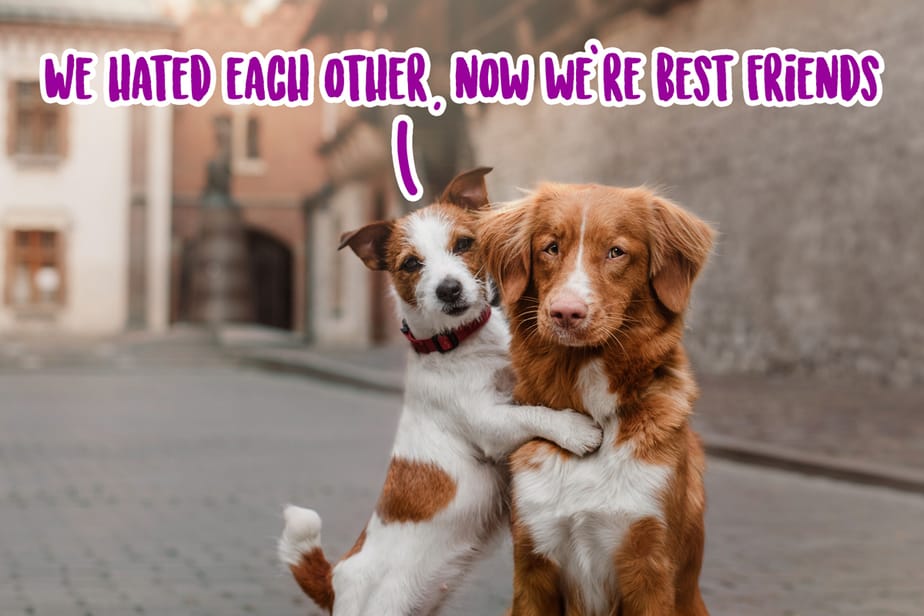
How to introduce an older dog to a new puppy
For dogs who value their homes and personal spaces highly, it may be beneficial to first introduce the older dog to a new puppy outside of the home.
This can be at the breeder/caretaker’s house, at a shelter (in a private room), or even outdoors in a more public space, as long as both dogs are vaccinated against basic vaccine-preventable diseases.
Use scent to introduce the dog and puppy
One recommended method is rubbing a blanket or towel on your dog, under their belly, the back legs, and armpits. Then take this blanket to the puppy’s breeder and have the puppy spend time with it.
Likewise, get the breeder to rub a towel or blanket on the puppy in the same places, and bring the scented towel or blanket to your established dog and get them to sniff it and even sleep with it.
Introducing a puppy to a dog
Step 1:
Don’t force anything: give each dog the option to interact, but don’t make it a requirement. And give them the option to leave the interaction if they’d prefer.
Bring a friend along so each of you can maintain control of each dog.
Step 2:
Keep toys and treats handy so it’s a positive experience (but make sure each dog has their own toys. Forcing new acquaintances to share toys can become dangerous).
Bring neutral toys and make sure not to grab your dog’s favorite, because they might not want to share.
Speak with happy voices, and make sure to interact with each dog equally, both separately and together.
Step 3:
Consider supplementing the experience with a canine pheromone product that will promote calmness and provide comfort for each dog.
There are products specific to adult dogs and to puppies, so pick an age-appropriate product for each.
This won’t entirely eliminate stress or solve any behavioral problems, but it can help make the whole experience more positive.
Step 4:
Once your puppy and dog have met on neutral ground, and if all went well, now you can move onto the next stage of meeting in your home.
When you bring home your new puppy, be sure to have your older dog in another room or in the yard, where they can’t see the puppy coming.
Bring the puppy in the house, and then allow your older dog to come inside. This can remove some territory guarding issues that may arise.
It’s also important that your older dog has a leash already attached, and that you have control over them, in case things don’t go well.
It’s also a good idea to have fed them prior to the meeting.
If your older dog is protective of their things, then it’s best to remove them from the equation. Hide their favorite toys to stop any fights breaking out.
Also make sure you give lots of love and attention to your older dog during this time to reduce the stress caused by the new puppy. If you notice they aren’t acting like themselves, or a depressed, give them their own time by putting the puppy in their crate, or another room.
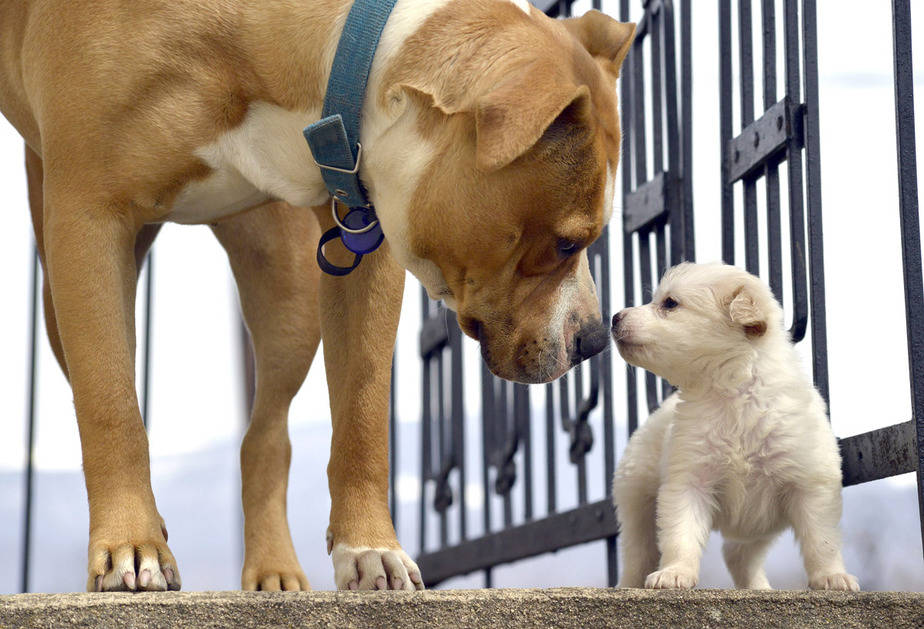
Is it fair to get a puppy with an older dog?
The truth is it depends entirely on your individual dog. There are a lot of important things to consider before introducing a new pack member into the home.
Most pet owners know their dogs pretty well, so think about your dog’s needs and preferences before you jump on the idea of getting a new puppy.
If your dog doesn’t like other dogs
If your dog is known to dislike animals or children, then it’s best to stay clear of introducing a new puppy or dog into the household. Although over time they may adjust, the wellbeing of your older dog will be affected, and they will likely become depressed.
In many ways, dogs are just like us. And one of those ways is some of us are more social than others. Depending on your dog’s history of socialization (especially during the socialization window in puppyhood), your dog might just prefer the company of who they know.
It’s also important to consider the fact that your dog might enjoy having visitors over, but it’s another thing altogether to have a puppy biting at them, stealing their bed, getting in their food bowl, and waking them up while they’re sleeping.
If your dog isn’t a “dog person”, it’s unfair (and potentially dangerous) to try forcing them to change.
If you don’t know if your dog likes other dogs
If you truly don’t know how your dog would react, setting up playdates is a good option.
Have one of your trusted and responsible two-legged friends bring their dog over for a couple of visits a week.
If your dog loves the experience and doesn’t seem stressed by the visit, you could consider introducing a new dog to the household. If your dog seems stressed or upset in any way, maybe now is not the right time.
Another good option that could prove beneficial to more than just you and your household, is to foster a dog from a local shelter.
This way you get to spend time with a new furry friend and your dog gets to meet someone new.
Now, of course, if you and your dog fall in love with the new visitor, most shelters would give you priority in adopting. But in the event that the situation goes sideways (the dogs don’t get along, etc), there’s always the option to bring the foster dog back to the shelter.
Some shelters will even foster out puppies who need socialization with humans and other animals.
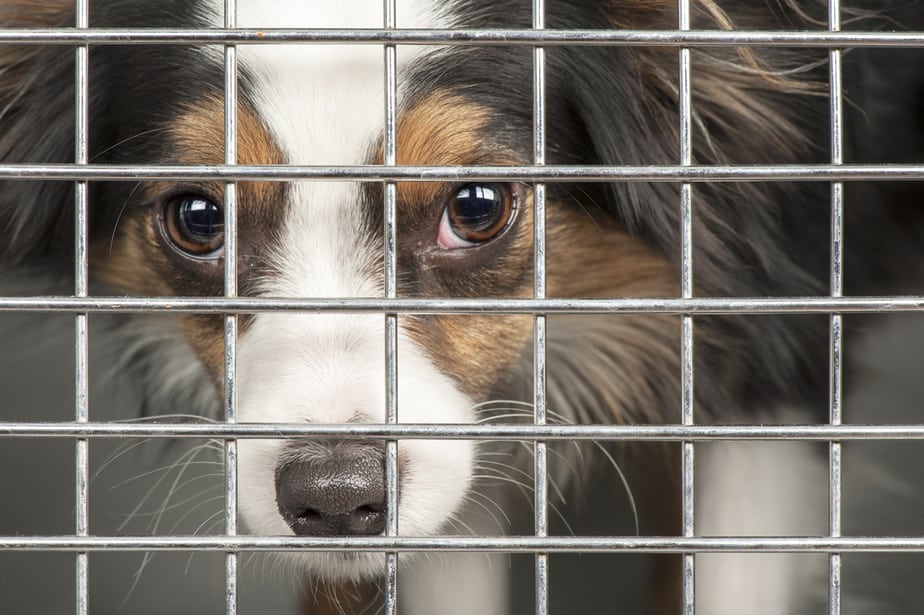
If your dog LOVES other dogs
Even if you know your dog makes friends easily, it’s still best to do some trialing/ testing before introducing a new dog or puppy to the home.
Sometimes some dogs just don’t like each other. Even a well socialized dog who often shows a keen interest in other dogs, will sometimes show a dislike of another dog.
An older dog who has a new dog in the house that they don’t like will cause stress to them and can lead to a dangerous situation.
It’s also worth noting that some dogs prefer the company of adult dogs, rather than puppies.
Puppies can be hard work for owners, but they can also hard work for the older dog in the house. Puppies will often mouth at the dog, walk under their feet, get in the way, and be a general nuisance.
If someone were doing this to you all day long, you would become agitated and depressed, too!
An established dog with great social skills can even become stressed in such a situation and might even lash out at the puppy with barking, growling, or in a worst-case scenario, a bite.
So even if your dog generally seems OK with other furry friends, it’s best to spend some time observing how they behave with other dogs, in and out of the home first.
Let them meet their new potential housemate ahead of time, make it a fun and stress-free experience. And if they say “No, I don’t like them”, respect their decision.
Final Word
Getting a new puppy is a huge responsibility, with so much to consider. Most importantly, considering how your existing dog will react to your new puppy.
Think about the kind of life your current dog leads and how the new puppy might fit into it. And remember that if it doesn’t work out, it’s not a big deal, but your older dog shouldn’t bear punishment for it. They deserve to have their opinion heard too!

